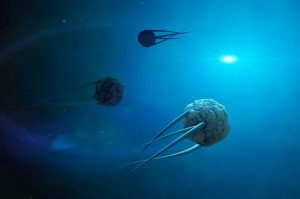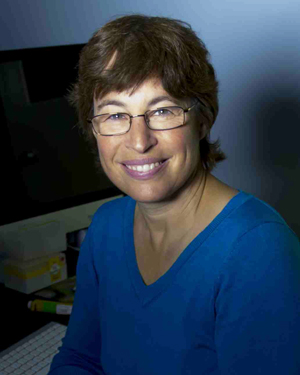Will We Discover Extraterrestrial Life in the Next 25 Years? TheHumanist.com Interview with NASA Astrobiologist Lynn Rothschild

NASA chief scientist Ellen Stofan stirred excitement at a NASA panel on water in the universe last week with her prediction: “I think we’re going to have strong indications of life beyond Earth within a decade, and I think we’re going to have definitive evidence within 10 to 20 to 30 years.”
Other panelists agreed. John Grunsfeld, associate administrator of NASA’s Science Mission Directorate, says he believes we’re only “one generation away in our solar system, and one generation [away] on a planet around a nearby star.”
“It’s definitely not an if, it’s a when,” added Jeffrey Newmark, interim director of NASA’s Heliophysics Division.
Don’t expect to see anything like the alien in E.T., though, as the types of lifeforms they’re talking about are microbial.
Dr. Lynn J. Rothschild, evolutionary biologist, astrobiologist, and senior scientist at NASA’s Ames Research Center (and our Isaac Asimov Awardee this year), shared with us some of her thoughts on the extraterrestrial search for life.
TheHumanist.com: Do you think life is carbon-based? Is it biologically feasible to not be carbon-based as per our current understanding of biochemistry?

Lynn Rothschild
Lynn: There are so many reasons to think life would have to be carbon-based, at least with the parameters of our universe. This is due to bonding potential, the complex chemistry that is derived from it, and the abundance of carbon in the universe (fourth most common element). With that being said, Earth, which is relatively devoid of carbon (we are mostly silicates), still features carbon-based life. To me, the kicker is that even in the interstellar medium we see organic chemistry. So my firm belief (unless you radically change the environmental parameters) is that carbon is non-negotiable.
TheHumanist.com: In your wildest imagination, how different can life be from life on Earth?
Lynn: Funny you should ask, as I’ve thought a bit about this. What about life’s history is likely to be repeated, or not? Certain environmental extremes would hold. For example, if liquid water is the solvent, you can’t stray too far away from 0-100°C at standard pressure. You can also argue that vision and photosynthesis is likely to use wavelength of solar radiation between 400-750 nm. Too far into the UV, and organic molecules are destroyed. Too much into the infrared, there is not much energy.
If life is to be based on organic carbon, then the first forms are likely to have used what was around. Eventually those that could make their own “food” (think, for example, algae and plants) would be nearly (or completely) self-sufficient—but how much energetically easier to eat what another organism has made (think herbivore such as a snail or cow). But “meat” is more nutritious, so how much better to be a predator! Usually predators develop bigger brains to outsmart their prey. Not always, but there are plenty of examples, thus driving the evolution of intelligence.
There are plenty of other general patterns that I think are likely to hold, but whether Martians have five fingers? Well…
TheHumanist.com: Is life only constructed with left-handed amino acids? Are there any ideas as to why?
Lynn: There are a few right-handed amino acids used but not in proteins coded for by mRNA and translated by the ribosomal apparatus. It is much easier to make long chains if all the amino acids have the same handedness (chirality). Similarly, life on Earth uses right-handed sugar monomers.
TheHumanist.com: Do you think we’ll discover evidence of life or actual “lifeforms” (whatever that may mean) by 2025?
Lynn: Oh, boy. I am not as confident about that. It depends a lot on whether we have the missions that allow this discovery, whether we look in the right places, whether we recognize the life even if we find it, and, most of all, whether it is really there. All this being said, I desperately hope that I am wrong!
I do feel much more confident that we will be able to make a second life form in the lab on Earth during that time span.
Join as at the American Humanist Association’s Annual Conference coming up in May to hear more of Dr. Rothschild’s thoughts.
